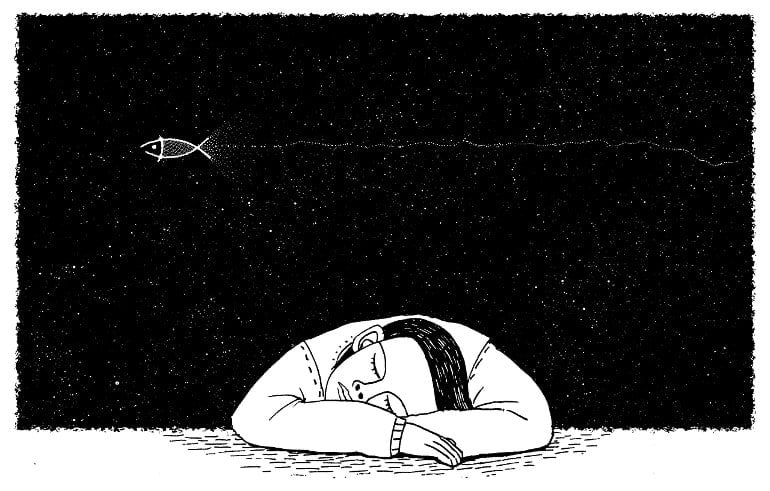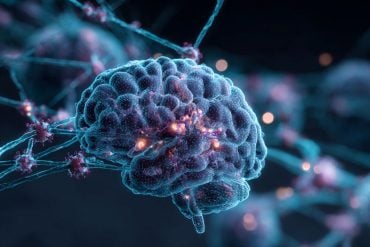Summary: Data collected from a tetraplegic man learning a BCI to play Simon showed the brain replays the learned information during sleep.
Source: Mass General
Why do we sleep? Scientists have debated this question for millennia, but a new study by researchers at Massachusetts General Hospital (MGH), conducted in collaboration with colleagues at Brown University, the Department of Veterans Affairs, and several other institutions, adds new clues for solving this mystery.
Their findings, published in the Journal of Neuroscience, may help explain how humans form memories and learn, and could eventually aid the development of assistive tools for people affected by neurologic disease or injury.
Scientists studying laboratory animals long ago discovered a phenomenon known as “replay” that occurs during sleep, explains neurologist Daniel Rubin, MD, Ph.D., of the MGH Center for Neurotechnology and Neurorecovery, the lead author of the study.
Replay is theorized to be a strategy the brain uses to remember new information. If a mouse is trained to find its way through a maze, monitoring devices can show that a specific pattern of brain cells, or neurons, will light up as it traverses the correct route.
“Then, later on while the animal is sleeping, you can see that those neurons will fire again in that same order,” says Rubin. Scientists believe that this replay of neuronal firing during sleep is how the brain practices newly learned information, which allows a memory to be consolidated—that is, converted from a short-term memory to a long-term one.
However, replay has only been convincingly shown in lab animals.
“There’s been an open question in the neuroscience community: To what extent is this model for how we learn things true in humans? And is it true for different kinds of learning?” asks neurologist Sydney S. Cash, MD, Ph.D., co-director of the Center for Neurotechnology and Neurorecovery at MGH and co-senior author of the study.
Importantly, says Cash, understanding whether replay occurs with the learning of motor skills could help guide the development of new therapies and tools for people with neurologic diseases and injuries.
To study whether replay occurs in the human motor cortex—the brain region that governs movement—Rubin, Cash, and their colleagues enlisted a 36-year-old man with tetraplegia (also called quadriplegia), meaning he is unable to move his upper and lower limbs, in his case due to a spinal cord injury.
The man, identified in the study as T11, is a participant in a clinical trial of a brain-computer interface device that allows him to use a computer cursor and keyboard on a screen.
The investigational device is being developed by the BrainGate consortium, a collaborative effort involving clinicians, neuroscientists, and engineers at several institutions with the goal of creating technologies to restore communication, mobility, and independence for people with neurologic disease, injury, or limb loss. The consortium is directed by Leigh R. Hochberg, MD, Ph.D., of MGH, Brown University, and the Department of Veterans Affairs.
In the study, T11 was asked to perform a memory task similar to the electronic game Simon, in which a player observes a pattern of flashing colored lights, then has to recall and reproduce that sequence. He controlled the cursor on the computer screen simply by thinking about the movement of his own hand.
Sensors implanted in T11’s motor cortex measured patterns of neuronal firing, which reflected his intended hand movement, allowing him to move the cursor around on the screen and click it at his desired locations. These brain signals were recorded and wirelessly transmitted to a computer.
That night, while T11 slept at home, activity in his motor cortex was recorded and wirelessly transmitted to a computer.
“What we found was pretty incredible,” says Rubin. “He was basically playing the game overnight in his sleep.”
On several occasions, says Rubin, T11’s patterns of neuronal firing during sleep exactly matched patterns that occurred while he performed the memory-matching game earlier that day.
“This is the most direct evidence of replay from motor cortex that’s ever been seen during sleep in humans,” says Rubin.

Most of the replay detected in the study occurred during slow-wave sleep, a phase of deep slumber. Interestingly, replay was much less likely to be detected while T11 was in REM sleep, the phase most commonly associated with dreaming. Rubin and Cash see this work as a foundation for learning more about replay and its role in learning and memory in humans.
“Our hope is that we can leverage this information to help build better brain-computer interfaces and come up with paradigms that help people learn more quickly and efficiently in order to regain control after an injury,” says Cash, noting the significance of moving this line of inquiry from animals to human subjects.
“This kind of research benefits enormously from the close interaction we have with our participants,” he adds, with gratitude to T11 and other participants in the BrainGate clinical trial.
Hochberg concurs. “Our incredible BrainGate participants provide not only helpful feedback toward the creation of a system to restore communication and mobility, but they also give us the rare opportunity to advance fundamental human neuroscience—to understand how the human brain works at the level of circuits of individual neurons,” he says, “and to use that information to build next-generation restorative neurotechnologies.”
About this sleep and learning research news
Author: Press Office
Source: Mass General
Contact: Press Office – Mass General
Image: The image is in the public domain
Original Research: Closed access.
“Learned Motor Patterns Are Replayed in Human Motor Cortex during Sleep” by Daniel B. Rubin et al. Journal of Neuroscience
Abstract
Learned Motor Patterns Are Replayed in Human Motor Cortex during Sleep
Consolidation of memory is believed to involve offline replay of neural activity. While amply demonstrated in rodents, evidence for replay in humans, particularly regarding motor memory, is less compelling.
To determine whether replay occurs after motor learning, we sought to record from motor cortex during a novel motor task and subsequent overnight sleep. A 36-year-old man with tetraplegia secondary to cervical spinal cord injury enrolled in the ongoing BrainGate brain–computer interface pilot clinical trial had two 96-channel intracortical microelectrode arrays placed chronically into left precentral gyrus.
Single- and multi-unit activity was recorded while he played a color/sound sequence matching memory game. Intended movements were decoded from motor cortical neuronal activity by a real-time steady-state Kalman filter that allowed the participant to control a neurally driven cursor on the screen. Intracortical neural activity from precentral gyrus and 2-lead scalp EEG were recorded overnight as he slept.
When decoded using the same steady-state Kalman filter parameters, intracortical neural signals recorded overnight replayed the target sequence from the memory game at intervals throughout at a frequency significantly greater than expected by chance. Replay events occurred at speeds ranging from 1 to 4 times as fast as initial task execution and were most frequently observed during slow-wave sleep.
These results demonstrate that recent visuomotor skill acquisition in humans may be accompanied by replay of the corresponding motor cortex neural activity during sleep.






